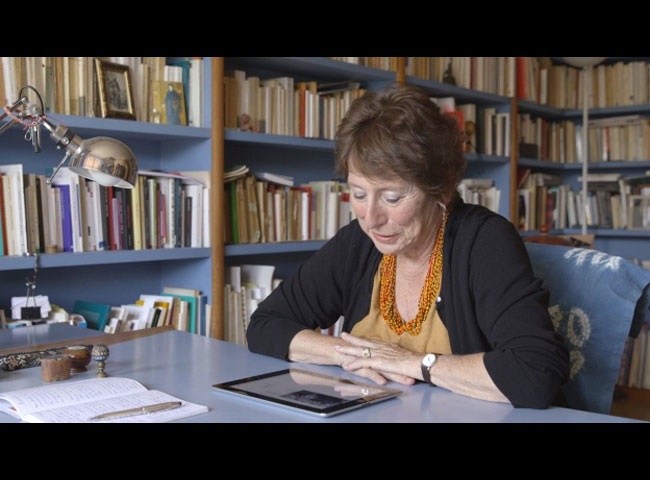Le Roman algérien - Chapitre 2
-
Réalisé par Katia Kameli • Écrit par Katia Kameli
-
Algérie, France • 2017 • 34 minutes • HD • Couleur
- Réalisation :
Katia Kameli - Écriture :
Katia Kameli - Image :
Julien Sallé, Simon Bonnani - Son :
Frédéric Dabo - Montage :
Stéphane Broc
- Production (structure) :
Katia Kameli - Coproduction :
Spectre Productions - Ayant droit :
Katia Kameli
- N° ISAN :
non renseigné
Résumé
Dans le Roman algérien - Chapitre 2, Marie José Mondzain nous offre une relecture du Roman algérien - Chapitre 1. Ce second film est lui construit sur une mise en abyme. La structure gigogne permet une mise à distance des images et de la charge symbolique qu’elles contiennent. Elle ouvre ainsi sur un espace de négociation dans lequel peuvent exister de nouvelles associations. Ces associations fonctionnent comme le point de départ d’une écriture de l’Histoire en mouvement : elles produisent des narrations inédites à la base d’une nouvelle forme d’historicisation. Dans la seconde partie de ce deuxième chapitre, Marie-José Mondzain est à son bureau, face à un autre écran, celui d’une tablette. La caméra opère un champ contre-champs entre elle ce nouvel écran. Mondzain regarde et analyse une autre matière visuelle, celle des rushs collectés au cours du tournage du premier chapitre. Ces rushes auraient pu rester invisibles ou plutôt "invus" ; de la même façon que certains personnages politiques de l’histoire algérienne sont absents des images du kiosk.
Dans son ouvrage L’image peut-elle tuer, Marie-José Mondzain définit l’ "invu" comme "ce qui est en attente de sens dans le débat de la communauté". L’invu serait alors une sorte d’archive non exploitée qui attend le regard pour se déployer. En soumettant les rushes du premier chapitre à l’œil de la philosophe, j’interroge ainsi la constitution d’une archive mais aussi la nécessité d’une relecture constante comme moyen de réactivation du sens de l’histoire.
In Algerian Novel - Chapter 2, French philosopher Marie José Mondzain is reinterpreting Algerian Novel- Chapter 1. This second chapter is built on the idea of a mise en abyme. The film’s nested structure is a way to keep images and their symbolic load at a distance. It opens a new space of negotiation wherein new associations can be shaped. They function as a starting point for the writing of a history in movement and produce narratives which then become touchstones for a new kind of historicisation.
In the second part of the second chapter, Maris-José Mondzain is at her desk. She is facing another screen, a tablet. The camera is playing on field of vision and reverse angle. Mondzain is analysing another visual material: that of the rushes recorded during the shooting of Algerian Novel - Chapter 1. These rushes could have been left invisible, or rather "unseen"- the same way some of the Algerian’s historical figures are not represented on the pictures of the kiosk. In her book, L’image peut-elle tuer? ['Can the image kill?'], Marie-José Mondzain defines the "unseen" as "what is waiting for meaning in the community debate". The unseen would then be a sort of unexploited archive, waiting for the gaze to expand. Here, the tablet computer on which Mondzain is seeing the images is literally making their existence tangible. By showing these rushes to the philosopher’s eye, I am questioning the making of the archive and the necessity of a constant rereading as a way to reactivate the meanings of History.
Collection
Mot(s)-clé(s) thématique(s)
À propos du film
Sélections et distinctions
- 2019 • Festival de Cinéma de Douarnenez - Gouel Ar Filmou • Douarnenez (France) • Sélection "Algériennes, Algériens"
Comment avoir accès au film ?
-
Édition DVD
- Il n'existe pas d'édition DVD à notre connaissance
-
Accès VOD
- Il n'existe pas d'accès en VOD à notre connaissance
- Distribution
- Aide sur les moyens d'accéder à un film
